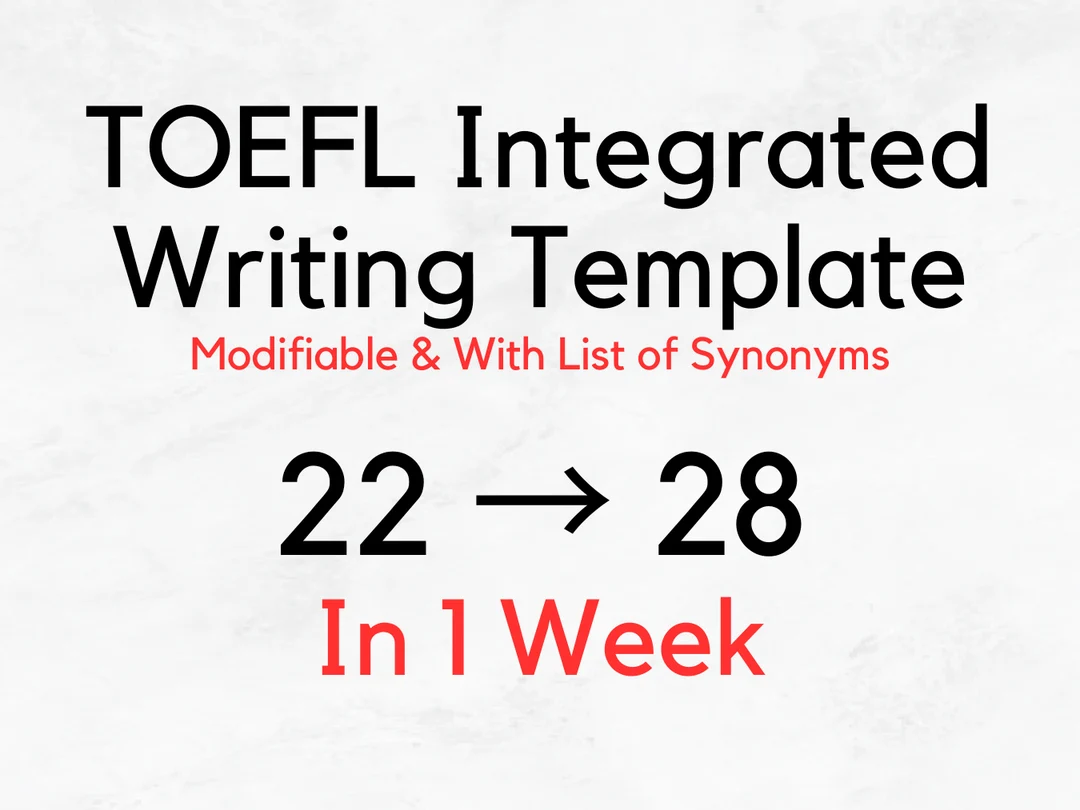TOEFL iBT is a commonly accepted English-language exam, and it can be quite challenging. But, with the right approach, you can succeed. In this article, we’ll cover the TOEFL template to help you excel in the TOEFL integrated writing template section. This template simplifies the process, making it easier to score well and feel more confident on test day.
What are TOEFL Integrated Writing Tasks?
TOEFL Integrated Writing Tasks are part of the TOEFL iBT (Test of English as a Foreign Language, Internet-Based Test). These tasks assess your ability to integrate information from different sources and present a well-structured response.
In the Integrated Writing Task, you will typically read a short passage and listen to an academic lecture or conversation related to the passage. Your task is to summarize the key points and the relationship between the reading and the listening in a 150-225 word essay.
These tasks evaluate your comprehension, note-taking, and essay-writing skills and how effectively you can convey the information presented.
TOEFL Integrated Writing Template
Paragraph 1: Introduction (2-3 sentences)
- Begin with a brief introduction to the topic and context of the reading passage.
- Mention the main topic and its key points.
Example: In the reading passage, the author discusses [main topic] and argues that [author’s viewpoint]. The author supports this viewpoint with several key points.
Paragraph 2: Summary of the Reading Passage (2-3 sentences)
- Summarize the main points and arguments made in the reading passage.
- Use your own words to restate the key ideas from the passage.
Example: The author asserts that [summary of key point 1]. Furthermore, the author argues [summary of key point 2].
Paragraph 3: Summary of the Lecture (2-3 sentences)
- Briefly outline the professor’s response to the reading passage.
- Mention any points of agreement or disagreement between the author and the professor.
Example: The professor, on the other hand, presents a different perspective. He/she contends that [summary of professor’s viewpoint]. This contrasts with the reading passage’s argument in [mention any disagreements].
Paragraph 4: Analysis of the Lecture (3-4 sentences)
- Discuss the reasons behind the professor’s stance by providing specific examples from the lecture.
- Explain how the professor’s points either support or challenge the reading passage.
Example: The professor supports his/her argument by citing [example from the lecture]. This example illustrates [explain the significance]. Additionally, the professor’s points challenge the reading passage’s argument because [explain how].
Paragraph 5: Conclusion (2-3 sentences)
- Summarize the key points of the lecture and how they relate to the reading passage.
- State which viewpoint you find more convincing, the author’s or the professor’s, and briefly explain why.
Example: In conclusion, the professor’s lecture sheds light on the flaws in the reading passage’s argument. Personally, I find the professor’s viewpoint more convincing because [briefly state your reasons].
READ ALSO: Germany Opportunity Card: Eligibility, How To Apply & More
What are TOEFL Independent Writing Tasks?
TOEFL Independent Writing Tasks are part of the TOEFL iBT (Test of English as a Foreign Language, Internet-Based Test). These tasks require test-takers to express their opinions on a specific topic. In the Independent Writing Task, you are given a prompt or question, and you have 30 minutes to write an essay in response.
Your essay should include an introduction, body paragraphs, and a conclusion. The task assesses your ability to organize and present your thoughts clearly, provide reasons and examples to support your ideas, and showcase your English writing proficiency. It’s an opportunity to express your independent perspective on various subjects.
TOEFL Independent Writing Task Template
Paragraph 1: Introduction (2-3 sentences)
- Start with a clear and concise introduction.
- Present the topic and your position on it.
Example: The topic I am going to address is [state the topic]. In my opinion, I [state your stance on the topic].
Paragraph 2: Main Idea and Explanation (3-4 sentences)
- Present your main idea or argument.
- Provide detailed reasons or examples to support your position.
Example: One key reason for my belief is [provide reason 1]. To illustrate, [provide an example or personal experience]. This demonstrates that [explain the significance of the example].
Paragraph 3: Counterargument (2-3 sentences, if applicable)
- Acknowledge a counterargument or an opposing viewpoint.
- Briefly explain the opposing viewpoint.
Example: Some might argue that [state the counterargument]. They claim that [briefly explain the counterargument].
Paragraph 4: Rebuttal (3-4 sentences, if applicable)
- Refute the counterargument by providing reasons or evidence that support your viewpoint.
- Explain why your position is stronger.
Example: However, I respectfully disagree with this perspective. [Provide a rebuttal argument or counterpoint]. This demonstrates that [explain why your position is more convincing].
Paragraph 5: Conclusion (2-3 sentences)
- Summarize your main points and restate your position.
- End with a closing thought or a call to action (if applicable).
Example: To sum up, I believe that [restate your stance]. It is evident that [summarize your main points]. In conclusion, [provide a closing thought or call to action].
Conclusion
The TOEFL Integrated Writing Template and Independent Writing Template provide valuable tools for navigating the TOEFL iBT with confidence. These templates offer structured approaches to effectively express your understanding of integrated content and your independent opinions. Success in these writing tasks depends on your ability to coherently convey information and articulate your perspective. With practice and these templates, you can boost your performance on the TOEFL and feel well-prepared on test day.

